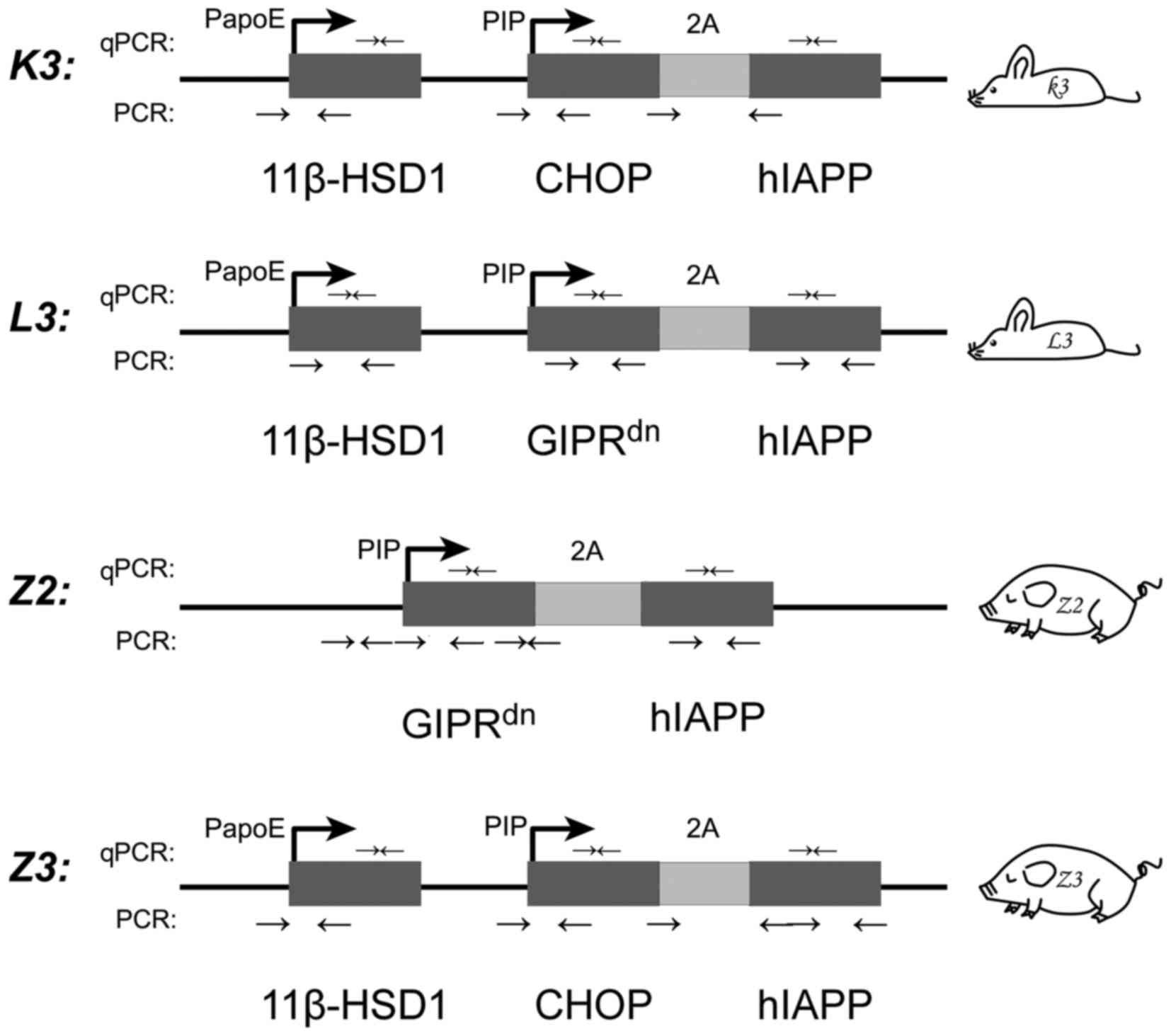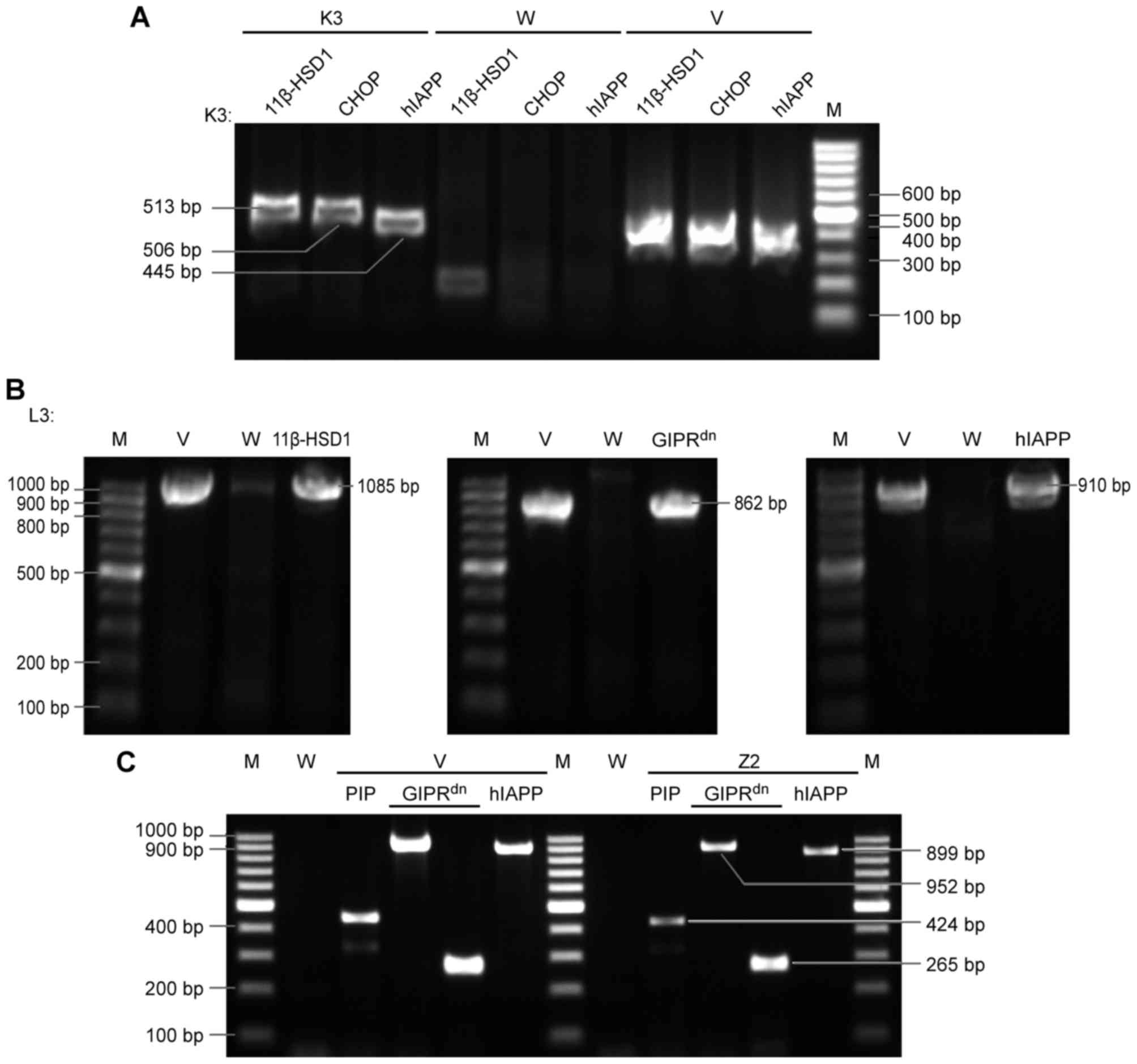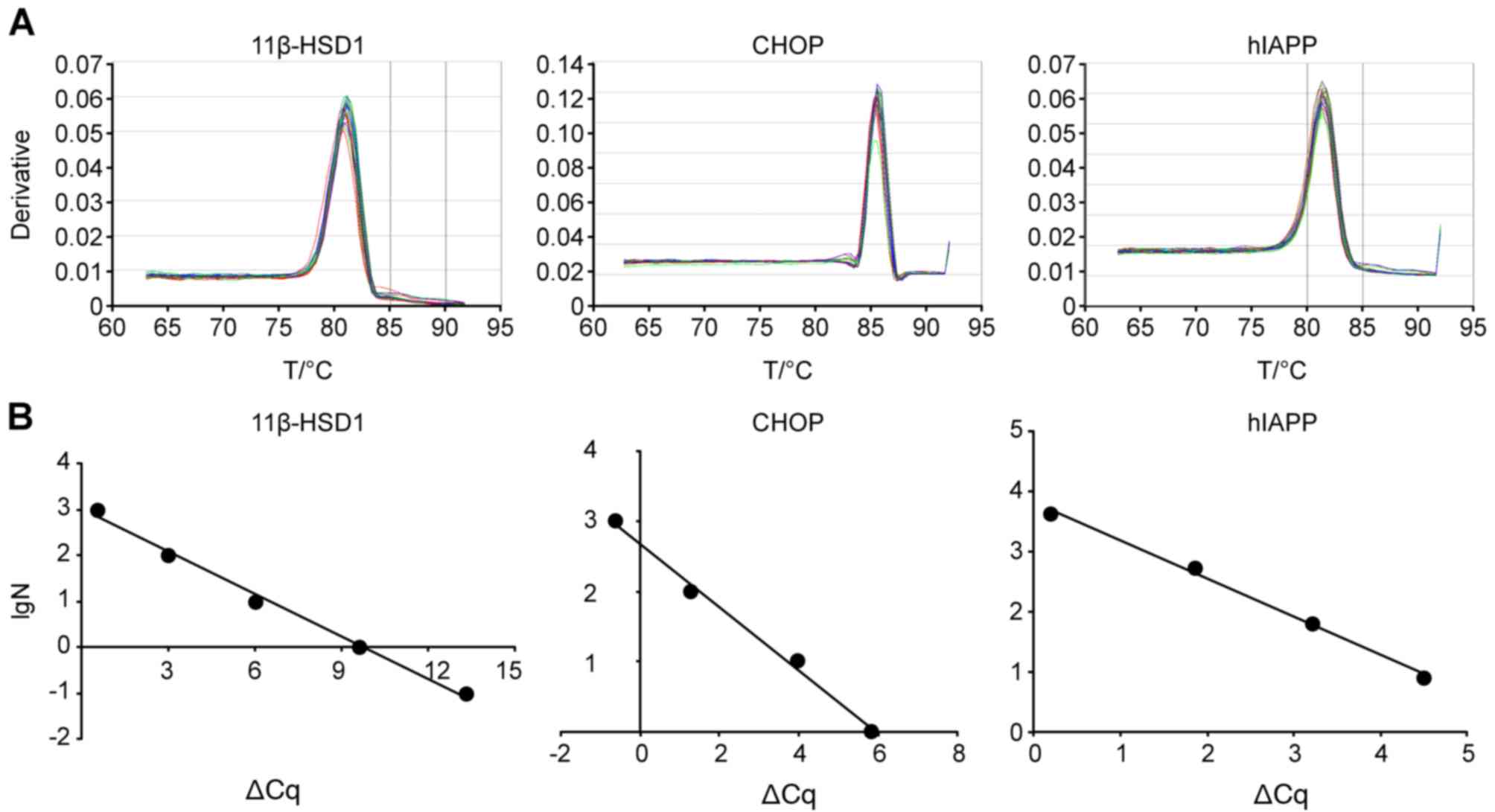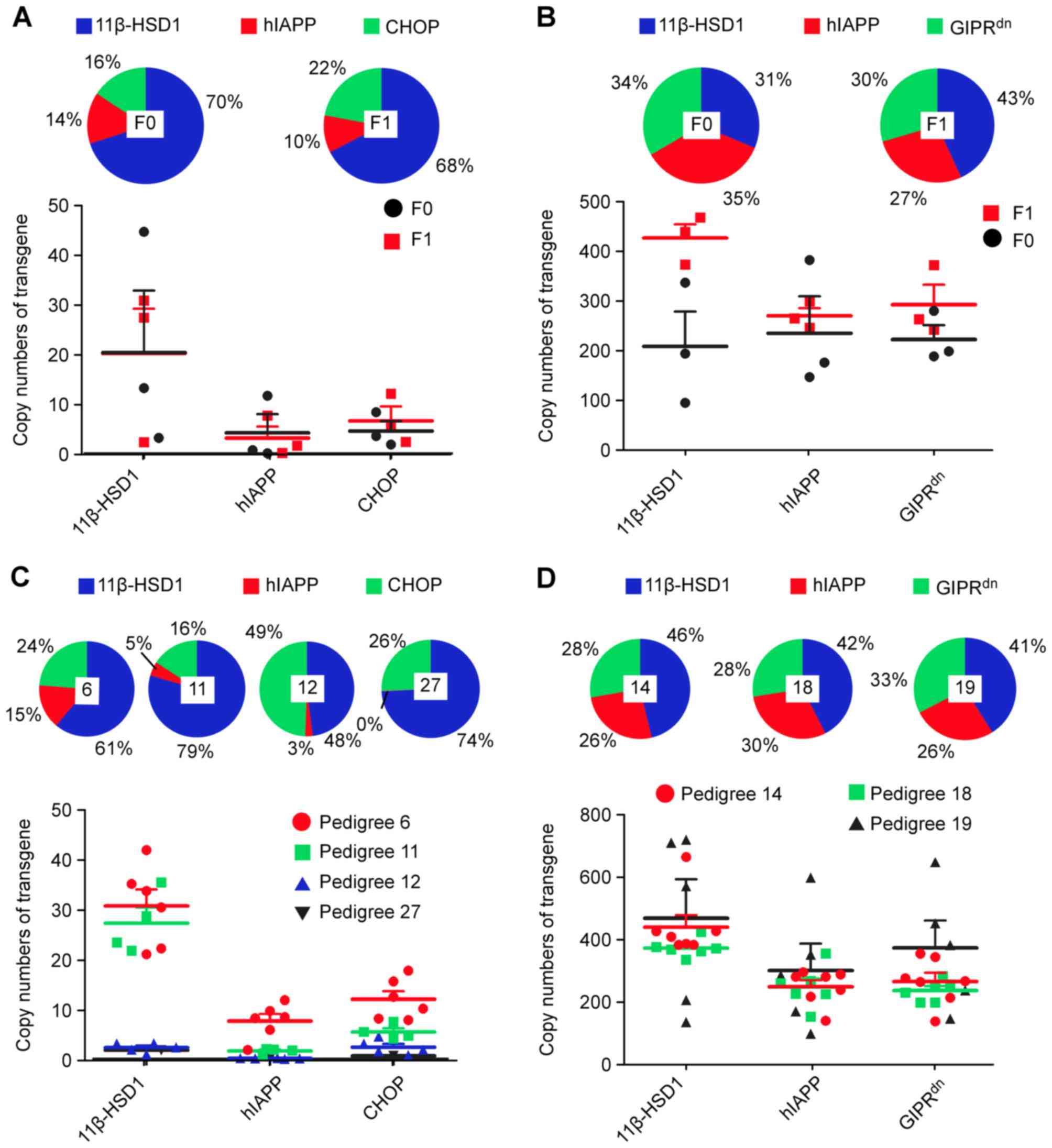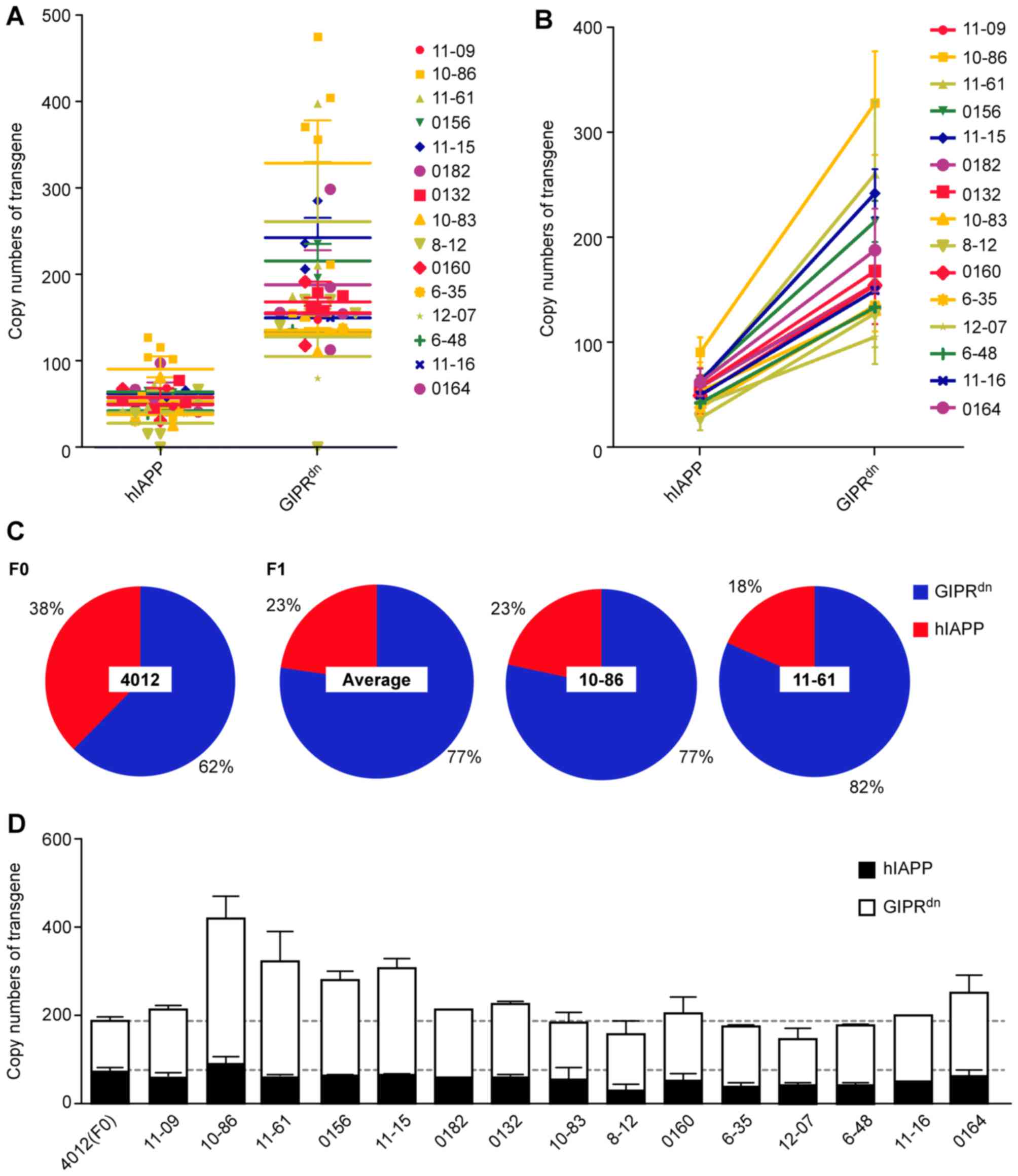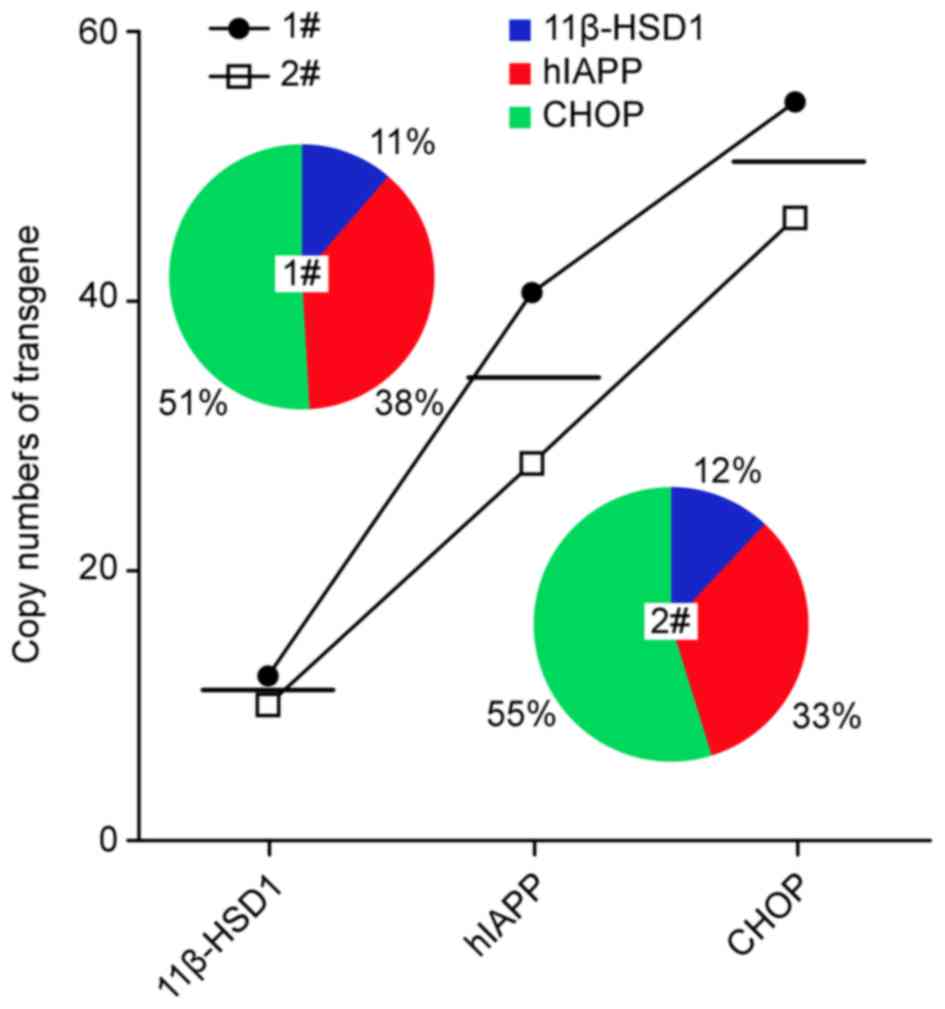|
1
|
Tizard M, Hallerman E, Fahrenkrug S,
Newell-McGloughlin M, Gibson J, de Loos F, Wagner S, Laible G, Han
JY, D'Occio M, et al: Strategies to enable the adoption of animal
biotechnology to sustainably improve global food safety and
security. Transgenic Res. 25:575–595. 2016. View Article : Google Scholar : PubMed/NCBI
|
|
2
|
Miao X: Recent advances in the development
of new transgenic animal technology. Cell Mol Life Sci. 70:815–828.
2013. View Article : Google Scholar : PubMed/NCBI
|
|
3
|
Fan N and Lai L: Genetically modified pig
models for human diseases. J Genet Genomics. 40:67–73. 2013.
View Article : Google Scholar : PubMed/NCBI
|
|
4
|
Gao S, Yang Y, Wang C, Guo J, Zhou D, Wu
Q, Su Y, Xu L and Que Y: Transgenic sugarcane with a cry1Ac gene
exhibited better phenotypic traits and enhanced resistance against
sugarcane borer. PLoS One. 11:e01539292016. View Article : Google Scholar : PubMed/NCBI
|
|
5
|
Kong S, Ruan J, Xin L, Fan J, Xia J, Liu
Z, Mu Y, Yang S and Li K: Multi-transgenic minipig models
exhibiting potential for hepatic insulin resistance and pancreatic
apoptosis. Mol Med Rep. 13:669–680. 2016. View Article : Google Scholar : PubMed/NCBI
|
|
6
|
Kong S, Ruan J, Xin L, Fan J, Zhu W, Xia
J, Li L, Yang S and Li K: Type 2 diabetes model of minipig
generated by multi-gene transgenic technology. Diabetes Metab Res
Rev. 31:262015.
|
|
7
|
Luo W, Li Z, Huang Y, Han Y, Yao C, Duan
X, Ouyang H and Li L: Generation of AQP2-Cre transgenic mini-pigs
specifically expressing Cre recombinase in kidney collecting duct
cells. Transgenic Res. 23:365–375. 2014. View Article : Google Scholar : PubMed/NCBI
|
|
8
|
Luo W, Li Z, Li P, Huang Y, Han Y, Yao C,
Zhang Z, Yan H, Pang D, Ouyang H and Li L: Expression of Cre
recombinase in alveolar epithelial cells of the AQP2-Cre transgenic
mini-pigs. Cell Physiol Biochem. 34:1597–1613. 2014. View Article : Google Scholar : PubMed/NCBI
|
|
9
|
Paterson JM, Morton NM, Fievet C, Kenyon
CJ, Holmes MC, Staels B, Seckl JR and Mullins JJ: Metabolic
syndrome without obesity: Hepatic overexpression of
11beta-hydroxysteroid dehydrogenase type 1 in transgenic mice. Proc
Natl Acad Sci USA. 101:7088–7093. 2004. View Article : Google Scholar : PubMed/NCBI
|
|
10
|
Whyte JJ and Prather RS: Genetic
modifications of pigs for medicine and agriculture. Mol Reprod Dev.
78:879–891. 2011. View Article : Google Scholar : PubMed/NCBI
|
|
11
|
He J, Ye J, Li Q, Feng Y, Bai X, Chen X,
Wu C, Yu Z, Zhao Y, Hu X and Li N: Construction of a transgenic pig
model overexpressing polycystic kidney disease 2 (PKD2) gene.
Transgenic Res. 22:861–867. 2013. View Article : Google Scholar : PubMed/NCBI
|
|
12
|
Ye J, He J, Li Q, Feng Y, Bai X, Chen X,
Zhao Y, Hu X, Yu Z and Li N: Generation of c-Myc transgenic pigs
for autosomal dominant polycystic kidney disease. Transgenic Res.
22:1231–1239. 2013. View Article : Google Scholar : PubMed/NCBI
|
|
13
|
Tian Y, Li W, Wang L, Liu C, Lin J, Zhang
X, Zhang N, He S, Huang J, Jia B and Liu M: Expression of 2A
peptide mediated tri-fluorescent protein genes were regulated by
epigenetics in transgenic sheep. Biochem Biophys Res Commun.
434:681–687. 2013. View Article : Google Scholar : PubMed/NCBI
|
|
14
|
Deng W, Yang D, Zhao B, Ouyang Z, Song J,
Fan N, Liu Z, Zhao Y, Wu Q, Nashun B, et al: Use of the 2A peptide
for generation of multi-transgenic pigs through a single round of
nuclear transfer. PLoS One. 6:e199862011. View Article : Google Scholar : PubMed/NCBI
|
|
15
|
Zhu H, Wen F, Li P, Liu X, Cao J, Jiang M,
Ming F and Chu Z: Validation of a reference gene (BdFIM) for
quantifying transgene copy numbers in Brachypodium distachyon by
real-time PCR. Appl Biochem Biotechnol. 172:3163–3175. 2014.
View Article : Google Scholar : PubMed/NCBI
|
|
16
|
Kong QR, Wu ML, Zhu J, Bou G, Huan YJ, Yin
Z, Mu YS and Liu ZH: Transgene copy number and integration site
analysis in transgenic pig. Prog Biochem Biophys. 12:0162009.
|
|
17
|
Park SJ, Cho B, Koo OJ, Kim H, Kang JT,
Hurh S, Kim SJ, Yeom HJ, Moon J, Lee EM, et al: Production and
characterization of soluble human TNFRI-Fc and human HO-1 (HMOX1)
transgenic pigs by using the F2A peptide. Transgenic Res.
23:407–419. 2014. View Article : Google Scholar : PubMed/NCBI
|
|
18
|
Qian X, Kraft J, Ni Y and Zhao FQ:
Production of recombinant human proinsulin in the milk of
transgenic mice. Sci Rep. 4:64652014. View Article : Google Scholar : PubMed/NCBI
|
|
19
|
Webster NL, Forni M, Bacci ML, Giovannoni
R, Razzini R, Fantinati P, Zannoni A, Fusetti L, Dalprà L, Bianco
MR, et al: Multi-transgenic pigs expressing three fluorescent
proteins produced with high efficiency by sperm mediated gene
transfer. Mol Reprod Dev. 72:68–76. 2005. View Article : Google Scholar : PubMed/NCBI
|
|
20
|
Batista RI, Luciano MC, Teixeira DI,
Freitas VJ, Melo LM, Andreeva LE, Serova IA and Serov OL:
Methodological strategies for transgene copy number quantification
in goats (Capra hircus) using real-time PCR. Biotechnol Prog.
30:1390–1400. 2014. View Article : Google Scholar : PubMed/NCBI
|
|
21
|
Song P, Cai C, Skokut M, Kosegi B and
Petolino J: Quantitative real-time PCR as a screening tool for
estimating transgene copy number in WHISKERS™-derived transgenic
maize. Plant Cell Rep. 20:948–954. 2002. View Article : Google Scholar
|
|
22
|
Freude S, Heise T, Woerle HJ, Jungnik A,
Rauch T, Hamilton B, Schölch C, Huang F and Graefe-Mody U: Safety,
pharmacokinetics and pharmacodynamics of BI 135585, a selective
11β-hydroxysteroid dehydrogenase-1 HSD1 inhibitor in humans: Liver
and adipose tissue 11β-HSD1 inhibition after acute and multiple
administrations over 2 weeks. Diabetes Obes Metab. 18:483–490.
2016. View Article : Google Scholar : PubMed/NCBI
|
|
23
|
Campbell JE, Ussher JR, Mulvihill EE,
Kolic J, Baggio LL, Cao X, Liu Y, Lamont BJ, Morii T, Streutker CJ,
et al: TCF1 links GIPR signaling to the control of beta cell
function and survival. Nat Med. 22:84–90. 2016. View Article : Google Scholar : PubMed/NCBI
|
|
24
|
Herbach N: Clinical and pathological
characterization of a novel transgenic animal model of diabetes
mellitus expressing a dominant negative glucose-dependent
insulinotropic polypeptide receptor (GIPR dn). Ludwig Maximilians
Universitat Munchen; Munich, Germany: 2002
|
|
25
|
Matveyenko AV and Butler PC: Islet amyloid
polypeptide (IAPP) transgenic rodents as models for type 2
diabetes. ILAR J. 47:225–233. 2006. View Article : Google Scholar : PubMed/NCBI
|
|
26
|
Eizirik DL, Cardozo AK and Cnop M: The
role for endoplasmic reticulum stress in diabetes mellitus. Endocr
Rev. 29:42–61. 2008. View Article : Google Scholar : PubMed/NCBI
|
|
27
|
Yang SL, Xia JH, Zhang YY, Fan JG, Wang H,
Yuan J, Zhao ZZ, Pan Q, Mu YL, Xin LL, et al: Hyperinsulinemia
shifted energy supply from glucose to ketone bodies in early
nonalcoholic steatohepatitis from high-fat high-sucrose diet
induced Bama minipigs. Sci Rep. 5:139802015. View Article : Google Scholar : PubMed/NCBI
|
|
28
|
Fang X, Mou Y, Huang Z, Li Y, Han L, Zhang
Y, Feng Y, Chen Y, Jiang X, Zhao W, et al: The sequence and
analysis of a Chinese pig genome. GigaScience. 1:1–11. 2012.
View Article : Google Scholar : PubMed/NCBI
|
|
29
|
Bustin SA: Absolute quantification of mRNA
using real-time reverse transcription polymerase chain reaction
assays. J Mol Endocrinol. 25:169–193. 2000. View Article : Google Scholar : PubMed/NCBI
|
|
30
|
Lin WS, Wang P, Cheng X, Yuan SL, Chen HX,
Lin YL, Tao HX, Wang YC and Wang LC: Estimation of the copy numbers
of exogenous gene in transgenic mice using the real-time
fluorescence quantitative PCR based comparative Ct method. Lett
Biotechnol. 11:301–305. 2013.
|
|
31
|
Li L, Li Q, Bao Y, Li J, Chen Z, Yu X,
Zhao Y, Tian K and Li N: RNAi-based inhibition of porcine
reproductive and respiratory syndrome virus replication in
transgenic pigs. J Biotechnol. 171:17–24. 2014. View Article : Google Scholar : PubMed/NCBI
|
|
32
|
Armour JA, Sismani C, Patsalis PC and
Cross G: Measurement of locus copy number by hybridisation with
amplifiable probes. Nucleic Acids Res. 28:605–609. 2000. View Article : Google Scholar : PubMed/NCBI
|
|
33
|
D'haene B, Vandesompele J and Hellemans J:
Accurate and objective copy number profiling using real-time
quantitative PCR. Methods. 50:262–270. 2010. View Article : Google Scholar : PubMed/NCBI
|
|
34
|
Kai LI, Gao HL, Gao L, Xiaole QI, Gao YL,
Yanwei XU and Wang XM: Development of a real-time PCR for
determination of foreign gene copy number in genome of pichia
pastoris. Chin J Anim Vet Sci. 42:742–746. 2011.
|
|
35
|
Yu L, Liu JP, Zhuang ZX, Yang LQ, Zhang
RL, Ye XM and Cheng JQ: Quantitative analysis of real-time PCR
expression production by REST and 2~((−ΔΔCT)). J Trop Med.
10:0082007.
|
|
36
|
Haurogné K, Bach JM and Lieubeau B: Easy
and rapid method of zygosity determination in transgenic mice by
SYBR Green real-time quantitative PCR with a simple data analysis.
Transgenic Res. 16:127–131. 2007. View Article : Google Scholar : PubMed/NCBI
|
|
37
|
Tang W, Newton RJ and Weidner DA: Genetic
transformation and gene silencing mediated by multiple copies of a
transgene in eastern white pine. J Exp Bot. 58:545–554. 2007.
View Article : Google Scholar : PubMed/NCBI
|
|
38
|
Vaucheret H and Fagard M: Transcriptional
gene silencing in plants: Targets, inducers and regulators. Trends
Genet. 17:29–35. 2001. View Article : Google Scholar : PubMed/NCBI
|
|
39
|
Zhang R, Yin Y, Zhang Y, Li K, Zhu H, Gong
Q, Wang J, Hu X and Li N: Molecular characterization of transgene
integration by next-generation sequencing in transgenic cattle.
PLoS One. 7:e503482012. View Article : Google Scholar : PubMed/NCBI
|
|
40
|
Wu Y, Fan H, Jing S, Xia J, Chen Y, Zhang
L, Gao X, Li J, Gao H and Ren H: A genome-wide scan for copy number
variations using high-density single nucleotide polymorphism array
in Simmental cattle. Anim Genet. 46:289–298. 2015. View Article : Google Scholar : PubMed/NCBI
|
|
41
|
Arrossi AV, Merzianu M, Farver C, Yuan C,
Wang SH, Nakashima MO and Cotta CV: Nodular pulmonary light chain
deposition disease: An entity associated with Sjögren syndrome or
marginal zone lymphoma. J Clin Pathol. 69:490–496. 2016. View Article : Google Scholar : PubMed/NCBI
|
|
42
|
Tessereau C, Léoné M, Buisson M, Duret L,
Sinilnikova OM and Mazoyer S: Occurrence of a non deleterious gene
conversion event in the BRCA1 gene. Genes Chromosomes Cancer.
54:646–652. 2015. View Article : Google Scholar : PubMed/NCBI
|
|
43
|
Lachaud C, Moreno A, Marchesi F, Toth R,
Blow JJ and Rouse J: Ubiquitinated Fancd2 recruits Fan1 to stalled
replication forks to prevent genome instability. Science.
351:846–849. 2016. View Article : Google Scholar : PubMed/NCBI
|
|
44
|
Hastings PJ, Lupski JR, Rosenberg SM and
Ira G: Mechanisms of change in gene copy number. Nat Rev Genet.
10:551–564. 2009. View Article : Google Scholar : PubMed/NCBI
|
|
45
|
Alessio AP, Fili AE, Garrels W, Forcato
DO, Nicotra Olmos MF, Liaudat AC, Bevacqua RJ, Savy V, Hiriart MI,
Talluri TR, et al: Establishment of cell-based transposon-mediated
transgenesis in cattle. Theriogenology. 85:1297–1311. 2016.
View Article : Google Scholar : PubMed/NCBI
|
|
46
|
Ruan J, Li H, Xu K, Wu T, Wei J, Zhou R,
Liu Z, Mu Y, Yang S, Ouyang H, et al: Highly efficient
CRISPR/Cas9-mediated transgene knockin at the H11 locus in pigs.
Sci Rep. 5:142532015. View Article : Google Scholar : PubMed/NCBI
|



